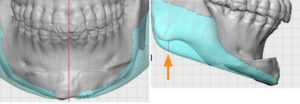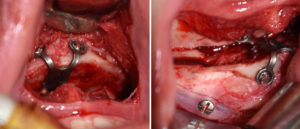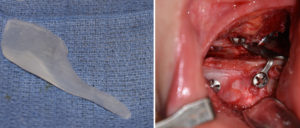Background: A well defined jawline is a desirous lower facial feature for both men and women. Such a look is usually when there is a smooth connection between the chin in the front and the jaw angles in the back. This also means that both the chin and jaw angle points have a visible presence with some angularity that is also proportionate in size to the rest of the face. Men may have an overall larger jawline size than women
In female jawlines having smoothness and angularity is more important than width. Even in isolated jaw angle implant surgery women usually seek a vertical jaw angle lengthening with only enough width to support the implant’s position on the bone. As the jaw angle drops down it creates a line coming forward toward the chin that clearly separates the face from the neck and, ideally, makes a v-shape from the front view
Augmenting the chin in jawline reshaping surgery can be done by an implant or a sliding genioplasty. While there is frequent debate amongst surgeons about the merits of each, such debates are usually irrelevant and not helpful. What matters is what dimensional chin changes are needed and which technique can best accomplish them. While a chin implant can be custom created to provide far greater than 10mms of horizontal projection, a large volume of implant material against the tight soft tissue chin pad should be considered carefully and moving the chin bone as part of that solution may have merit. But when vertical reduction of the chin is needed only a sliding genioplasty can achieve that type of dimensional change.



There are numerous ways to performed jawline reshaping surgery. When the chin’s dimensional changes are best met with a sliding geniopalsty, custom jaw angle implants can be made to complete the smooth and linear jawline change.
Highlights:
1) There are numerous methods to augment the chin (implants vs osteotomy) but only one method for that of the jaw angles and jawline. (implants)
2) In large amounts of chin augmentation (greater than 10mms) or in certain dimensional changes (vertical shortening) a sliding genioplasty may be needed.
3) A sliding genioplasty can be combined and connected with jaw angle implants through a custom design process for a smooth linear jawline effect.
Dr. Barry Eppley
Indianapolis, Indiana




